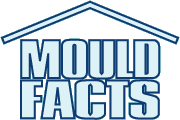Question: Hi there, I was hoping to get some clarity on some potential mold issues. We currently rent out a basement unit. We have never had issues before but the current tenant refuses to run the dehumidifier, as a result her wicker headboard got moldy. We had an air quality test that showed the total airborne fungal spore count for the outdoor sample was 11,000 per cubic meter and the indoor count was 43,000 per cubic meter. The testing company said they will come in and clean visible mold and that should take care of it after more indoor tests. I am just worried about spending another $600.00 and still have the same issues. Is this the correct process, should we be allowing the tenant to move back in after this 'surface' clean? Are those results worrisome? Any thoughts would be great. Thanks.
Answer: The testing company is right in suggesting a cleanup of the visible mold. However, cleaning the mold without addressing the underlying cause is a waste of resources since the mold will grow again after a few months if not weeks. The best way to control mold growth in a building is to correct moisture problems in addition to cleaning. You may get more information on mold removal at the Canadian Construction Association's website at
http://www.cca-acc.com/homepage_e.asp.
Labels: basement, fungi, growth, Mold, mould, spores


